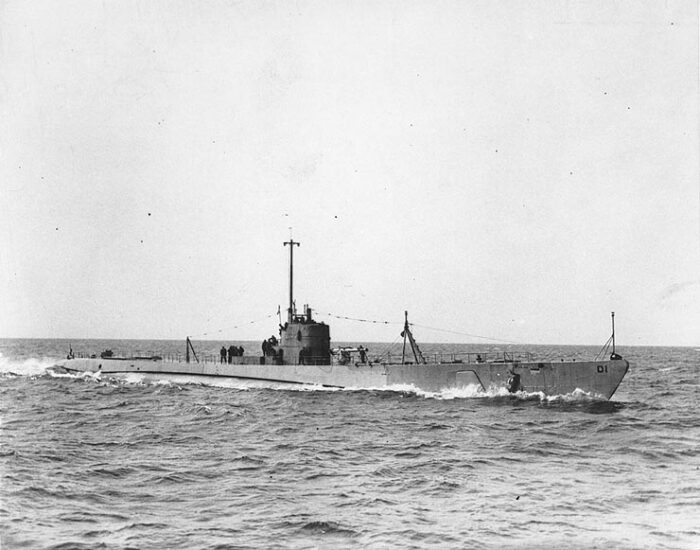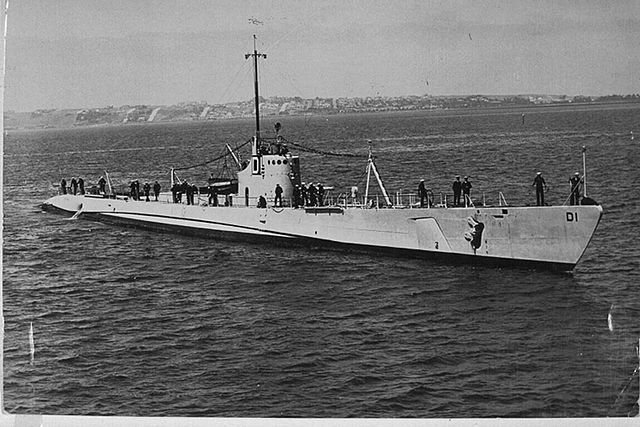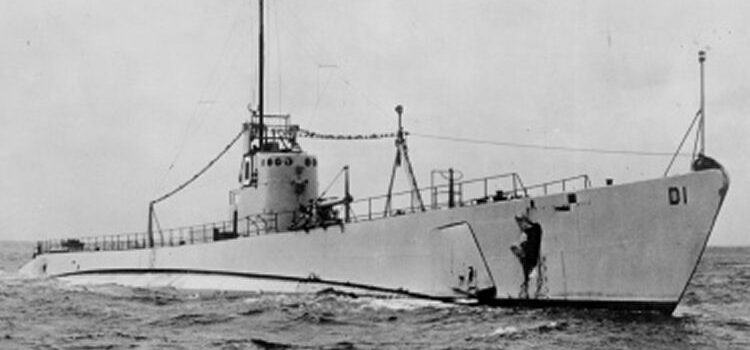 US Navy Submersible (1932-45)
US Navy Submersible (1932-45)WW2 US submarines:
O class | R class | S class | T class | Barracuda class | USS Argonaut | Narwhal class | USS Dolphin | Cachalot class | Porpoise class | Salmon class | Sargo class | Tambor class | Mackerel class | Gato class | Balao class | Tench classUSS Dolphin (SS-169) was a single experimental submersible of the interwar, V-7 and later SF-10/SC-3, earning 2 battle stars in WW2. She was indeed the penultimate V-Boat, a serie of experimental submarines that were instrumental to reinvent the type in US service and made a solid basis for future developments: The Cachalot (last V boats), Porpoise, Shark, Salmon class, Sargo and Tambor class which preceded the wartime Gato superclass. After a serie of cruisers, she was a return to oceanic types with a displacement halved, but still dimensions and tonnage that would be maintained more or less until 1940. In short, she was unlike her predecessors, the true start of the later interwar US submersible lineage. She was launched on 6 March 1932 at Portsmouth Navy Yard, commissioned on 1 June 1932 and saw action in WW2, being present in the Battle of Midway, taking part in the Kuril Islands campaign, and ended as a training boat at Pearl Harbor in 1943-45.

Development
Dolphin was the last design in the V-boat series. She was down to 319 ft (97 m) and displacing “only” 1,718 long tons (1,746 t) surfaced, 2,240 long tons (2,276 t) submerged), less than half earlier V-Boats. USS Dolphin was an attempt to reach a middle ground design between the earlier S-class and the postwar cruisers, still considered in between coastal and mid-oceanic boats.
Particular attention was paid to the propulsion machinery, which served previous classes not well on the long run. It was chosen to improve performances by retrieving the same machinery as V-5 and V-6, but scaled-down down to 1,750 hp (1,300 kW), plus a reduced endurance and torpedo load (18) due to the smaller hull. The torpedo armament was kept to six 21-inches or 533 mm tubes, four in the bow and two in the 2 stern. Unlike previous boats that featured a massive 6-inches gun, she was back to a more reasonable 4-inch (102 mm)/50 caliber deck gun, not retractable. She corresponded to the range and duration of war patrols defined through war games for the Pacific, and virtually were a distant ancestor of the Gato, Balao, and Tench classes, which all had similar dimensions unlike intermediate classes.
Construction at Portsmouth Naval Yard was also innovative. Indeed she called for a partially welded and partially riveted method. The use of welding was really pished further with USS Dolphin, more than any previous boat and the superstructure, piping brackets and support frames were all welded, as well as the outer hull flanges to the Kingston valves, forward interior tanks and fore, aft torpedo rooms. This was still a cautious approach instead an all-welded construction, still new at the time but pioneered in many countries, and still more economically driven as both the inner and outer hulls were still riveted. This also had to do with trust but the advantage of welding were well understood. Designer was Andrew McKee, he reduced the standing flange on the I-beams used, gave them a unique shape like a “1” but later reverted on this idea as adversely affecting hull strength.
Design of the class
Hull and general design
Note: No plans found yet.
As seen above, USS Dolphin was a much smaller boat than before, displacing 1,718 long tons (1,746 t) surfaced (standard), and 2,240 long tons (2,276 t) submerged, for 319 ft 3 in (97.31 m) long and 27 ft 11 in (8.51 m) in beam, which was substantially larger than the ultimate V-boats, the Cachalot class, hit badly by the 1930 London treaty tonnage limitations on submarines. Thus, she was the last of that size before the wartime Gato class. All followers were indeed “1400 tonners”. As for the design, apart the points seen above, she was in line with the shape of the previous V-boats, just scaled down. The conning tower was placed further forward however and had a “tail” in the shape of an exhaust bulge for the main diesels. The net-proof cable ran from its end to the prow net cutter instead of the hull’s proper end. The deck gun was not on a bandstand and had to be protected by a breakwater further forward. She carried 63 men, which was 20 less than the previous Narwhal-Nautilus cruisers, and more than the 50+ of latter classes. So she probably felt cramped.
Powerplant
Engine specifications called for two BuEng (Bureau of Engineering) MAN-designed, direct-drive 6-cylinder, 4-stroke diesel engines. They were rated for 1,750 hp (1,300 kW) each mirroring the displacement, almost one hp per ton. These provided the power when surfaced whereas two BuEng MAN 4-cycle 6-cylinder auxiliary diesel engines rated for 450 hp (340 kW) driving 300 kW (400 hp) electrical generators (engines) which charged batteries but could also be coupled with the main diesels to increased surface speed via the diesel-electric system and through the main electric motors. Underwater, these electric units powered the submarine from the two 120-cell batteries located below the deck of the pressure hull, via two Electro-Dynamic electric motors. Overall, this was a complicated powerplant with many units that can fail. Still, unlike previous boats, the machinery worked well and proved reliable enough throughout the boat’s career, they were never replaced. That’s a testimony to the great care this ensemble was done.
Performances-wise, USS Dolphin reached a top speed when surfaced of 17 knots (31 km/h; 20 mph) and 8 knots (9.2 mph; 15 km/h) submerged. In 1939 on submerged trials she was still capable of 8.7 knots (10.0 mph; 16.1 km/h). Range was a reasonable 4,900 nmi (9,100 km; 5,600 mi) at 10 knots (19 km/h; 12 mph) and 18,780 nmi (21,610 mi; 34,780 km) at 10 knots with extra fuel stored in the main ballast tanks. Trials runs showed she could still run for 10 hours at 5 knots (5.8 mph; 9.3 km/h) underwater and reach 250 ft (76 m) in depth, which was the operational safety limit. Below that, pressure hull rivets would likely popup, after the pipe’s valves release.
Armament
4-inch/50-caliber gun
An old gun designed back in 1895 and entering service in 1898, and probably of Mark 10 by that stage (1914). It was shared with USS Salmon, USS Seadragon, USS Gato, USS Silversides and USS Robalo.
⚙ specifications 4-in/50 |
|
| Weight | 5,900 lb (2,700 kg) (with breech) |
| Barrel length | 200 in (5,080 mm) bore (50 calibres) |
| Elevation/Traverse | Up to 20° elevation, 300° traverse |
| Loading system | Manual, locking ring and screw breech |
| Muzzle velocity | 2,900 ft/s (880 m/s) |
| Range | 15,920 yd (14,560 m) at 20° elevation |
| Round | Fixed 33 lb (15 kg), 62.4–64.75 lb (28.30–29.37 kg) complete |
| Rate of Fire | 8-9 rounds per minute |
Mark 10
These boats were capable of firing the 21-inches Mark 10 21″ (53.3 cm) Mark 10, a 1917 design entering service in 1918. From 1927 these were the Mod 3, last designed by Bliss and manufactured by the Naval Torpedo Station at Newport. They equipped R and S boats, most V Boats and still soldiered in World War II as a trusted straight course to the infamous Mark 14.
⚙ specifications Mark 10 Mod 3
Weight: 2,215 lbs. (1,005 kg)
Dimensions: 183 in (4.953 m)
Propulsion: Wet-heater
Range/speed setting: 3,500 yards (3,200 m) / 36 knots
Warhead: 497 lbs. (225 kg) TNT or 485 lbs. (220 kg) Torpex
Guidance: Mark 13 Mod 1 gyro
Mark 14
In 1941 she carried the Mark 14, entering service in 1930. Designed replacement for the Mark 10, this was the new standard.
⚙ specifications Mark 14 TORPEDO
Weight: Mod 0: 3,000 lbs. (1,361 kg), Mod 3: 3,061 lbs. (1,388 kg)
Dimensions: 20 ft 6 in (6.248 m)
Propulsion: Wet-heater steam turbine
Range/speed setting: 4,500 yards (4,100 m)/46 knots, 9,000 yards (8,200 m)/31 knots or 30.5 knots
Warhead Mod 0: 507 lbs. (230 kg) TNT, Mod 3: 668 lbs. (303 kg) TPX
Guidance: Mark 12 Mod 3 gyro
USS Dolphin also carried from the start at the rear of the conning tower four pintle mounted, liquid-cooled 0.3 inches (7.6mm)/90 heavy machine guns as AA protection. This was revised to two heavy machine guns (see below).
Sensors
QB sonar: QB projector is a spherical hydrophone mounted on the lower end of the starboard training shaft. One face contains rochelle salt crystals, which change shape when a sound wave strikes this face of the projector. The other side is empty.
JK sonar: The JK/QC combination projector is mounted portside. The JK face is just like QB. The QC face contains small nickel tubes, which change size when a sound wave strikes this face. (The NM projector, mounted on the hull centerline in the forward trim tank, is used only for echo sounding.)
Se the full reference here
Modernizations
In 1933-1934 her 5-in/50 and 3-in browning /90 LMGs were replaced respectively by a 3-in(76mm)/50 Mk 17/18, and two single Browning M1920 0.5-in(12.7mm)/90 heavy machine guns.
In 1939 the QB sonar was replaced by the QC and JG sonar suites and in wartime she received the SD and SJ radars.
⚙ specifications |
|
| Displacement | 1,718 long tons surface, 2,240 long tons submerged |
| Dimensions | 319 ft 3 in x 27 ft 11 in x 13 ft 1 in (97.31 x 8.51 x 3.99m) |
| Propulsion | 2× diesels 1,750 hp, 2x diesels 450 hp, 300 kW EM, 2× 120-cell batt. 2× EDEM |
| Speed | 17 knots surfaced, 8 kn submerged |
| Range | 4,900 nmi at 10 knots normal |
| Max service depth | 250 ft (76 m) |
| Armament | 6x 21-in TTs (4 fwd, 2 aft, 18 torpedoes), 1×4 in/50 deck gun, see notes |
| Sensors | QB-JK suite |
| Crew | 7 officers, 56 enlisted |
Career of USS Dolphin

USS Dolphin stationed also at the Underwater Sound School in Hawaii, 1940 with motor boat aft of the sail.
USS Doplhin was laid down at Portmouth NyD on 14 June 1930, launched on 6 March 193 and commissioned on 1 June 1932. She departed Portsmouth on 24 October after trials and qualifications for San Diego on the west coast, arriving on 3 December and assigned to Submarine Division 12 (SubDiv 12). She took part in tactical exercises, torpedo tests until 4 March 1933, and returned to the East Coast and entered Portsmouth Navy Yard on 23 March for final acceptance trials, remaining until 1 August and back to San Diego on 25 August 1933, SubDiv 12.
In 1933 she tested a waterproof motor boat stored in a compartment aft of the sail (part of the existing “bulge” also containing the diesels exhausts). The idea was to provide a solution for prize rules, having a board to inspect merchant vessels.
She went on with yearly training routing and fleet problems on the west coast with triped to Pearl Harbor and the Aleutians or Alaska, as well as the Panama Canal Zone. She was modernized also and had a major refit (new deck guns, new AA). By December 1937, she was transfarred to Pearl Harbor and returned on the West Coast from 29 September to 25 October 1940. On 7 December 1941 she was at Pearl Harbor when the attack commenced and her crew jumped to action manning the two Brownings, trying to down passing by aircraft. She claimed one. But her captain rushed preparations and sailed out in search of Japanese submarines in Hawaiian waters.
Her first war patrol commenced on 24 December 1941 as she was ordered to the Marshall Islands in preparation for air strikes, back on 3 February 1942 for a refit and resupply. She sailed out again on 14 May and patrolled west of Midway then off the island itself during the Battle of Midway until 6 June. She made no spotting not sinking, and had repairs from 8 to 11 June there before returning to her patrol and spotting, attacking a destroyer and a tanker (“undetermined”) as noted. She was back at Pearl Harbor on 24 July.
Her third war patrol was from 12 October to 5 December in the cold Kuril Islands, for reconnaissance for other submarines to blockade Japanese bases there.
Missing logs here for later 1942.

By 1943 she was inspected and judged worn out. The inspection showed rusting and corrosion inside tanks weakened her structur with many elements which had rusted completely through.
Scheduled for a modernization but due to her age, tech and condition, it was decided instead to drop it and keep her for local operatons at Pearl Harbour, notably training new submariners on a boat more fitting to the Gato class than earlier S-class. She was on training duty until 29 January 1944, before sailing for exercises in the Canal Zone and Portsmouth Navy Yard for limited repairs but she was ordered not to dive below 150 feet. She then became a school boat at Submarine Base New London in Connecticut from 6 March 1945 until decommissioned on 12 October 1945 at Portsmouth. She was sold for scrap on 26 August 1946.
Read More/Src
Books
Friedman, Norman (1995). U.S. Submarines Through 1945: An Illustrated Design History. Annapolis NIP
Bauer, K. Jack; Roberts, Stephen S. (1991). Register of Ships of the U.S. Navy, 1775–1990 Greenwood Press.
Whitman, Edward C. “The Navy’s Variegated V-Class: Out of One, Many?” Undersea Warfare, Fall 2003, Issue 20
Alden, John D., Commander, USN (retired). The Fleet Submarine in the U.S. Navy Annapolis NIP 1979
Johnston, “No More Heads or Tails”, pp. 53–54
Blair, Clay, Jr. Silent Victory. New York: Bantam, 1976
Lenton, H. T. American Submarines (Navies of the Second World War) Doubleday, 1973
Silverstone, Paul H. U.S. Warships of World War II Ian Allan, 1965
Gardiner, Robert and Chesneau, Roger Conway’s All the World’s Fighting Ships 1922–1946
Friedman, Norman US Submarines through 1945: An Illustrated Design History NIP 1995
Links
http://www.navsource.org/archives/08/08169.htm
https://books.google.fr/books?id=QuIDAAAAMBAJ&dq=Popular+Mechanics+1931+curtiss&pg=RA1-PA100&redir_esc=y#v=onepage&q=Popular%20Mechanics%201931%20curtiss&f=false
http://navypedia.org/ships/usa/us_ss_dolphin.htm
https://en.wikipedia.org/wiki/USS_Dolphin_(SS-169)
Model Kits
None


 Latest Facebook Entry -
Latest Facebook Entry -  X(Tweeter) Naval Encyclopedia's deck archive
X(Tweeter) Naval Encyclopedia's deck archive Instagram (@navalencyc)
Instagram (@navalencyc)





 French Navy
French Navy Royal Navy
Royal Navy Russian Navy
Russian Navy Armada Espanola
Armada Espanola Austrian Navy
Austrian Navy K.u.K. Kriegsmarine
K.u.K. Kriegsmarine Dansk Marine
Dansk Marine Nautiko Hellenon
Nautiko Hellenon Koninklije Marine 1870
Koninklije Marine 1870 Marinha do Brasil
Marinha do Brasil Osmanlı Donanması
Osmanlı Donanması Marina Do Peru
Marina Do Peru Marinha do Portugal
Marinha do Portugal Regia Marina 1870
Regia Marina 1870 Nihhon Kaigun 1870
Nihhon Kaigun 1870 Preußische Marine 1870
Preußische Marine 1870 Russkiy Flot 1870
Russkiy Flot 1870 Svenska marinen
Svenska marinen Søværnet
Søværnet Union Navy
Union Navy Confederate Navy
Confederate Navy Armada de Argentina
Armada de Argentina Imperial Chinese Navy
Imperial Chinese Navy Marinha do Portugal
Marinha do Portugal Mexico
Mexico Kaiserliche Marine
Kaiserliche Marine 1898 US Navy
1898 US Navy Sovietskiy Flot
Sovietskiy Flot Royal Canadian Navy
Royal Canadian Navy Royal Australian Navy
Royal Australian Navy RNZN Fleet
RNZN Fleet Chinese Navy 1937
Chinese Navy 1937 Kriegsmarine
Kriegsmarine Chilean Navy
Chilean Navy Danish Navy
Danish Navy Finnish Navy
Finnish Navy Hellenic Navy
Hellenic Navy Polish Navy
Polish Navy Romanian Navy
Romanian Navy Turkish Navy
Turkish Navy Royal Yugoslav Navy
Royal Yugoslav Navy Royal Thai Navy
Royal Thai Navy Minor Navies
Minor Navies Albania
Albania Austria
Austria Belgium
Belgium Columbia
Columbia Costa Rica
Costa Rica Cuba
Cuba Czechoslovakia
Czechoslovakia Dominican Republic
Dominican Republic Haiti
Haiti Hungary
Hungary Honduras
Honduras Estonia
Estonia Iceland
Iceland Eire
Eire Equador
Equador Iran
Iran Iraq
Iraq Latvia
Latvia Liberia
Liberia Lithuania
Lithuania Mandchukuo
Mandchukuo Morocco
Morocco Nicaragua
Nicaragua Persia
Persia San Salvador
San Salvador Sarawak
Sarawak Uruguay
Uruguay Venezuela
Venezuela Zanzibar
Zanzibar Warsaw Pact Navies
Warsaw Pact Navies Bulgaria
Bulgaria Hungary
Hungary

 Bundesmarine
Bundesmarine Dutch Navy
Dutch Navy Hellenic Navy
Hellenic Navy Marina Militare
Marina Militare Yugoslav Navy
Yugoslav Navy Chinese Navy
Chinese Navy Indian Navy
Indian Navy Indonesian Navy
Indonesian Navy JMSDF
JMSDF North Korean Navy
North Korean Navy Pakistani Navy
Pakistani Navy Philippines Navy
Philippines Navy ROKN
ROKN Rep. of Singapore Navy
Rep. of Singapore Navy Taiwanese Navy
Taiwanese Navy IDF Navy
IDF Navy Saudi Navy
Saudi Navy Royal New Zealand Navy
Royal New Zealand Navy Egyptian Navy
Egyptian Navy South African Navy
South African Navy






























 Ukrainian Navy
Ukrainian Navy dbodesign
dbodesign